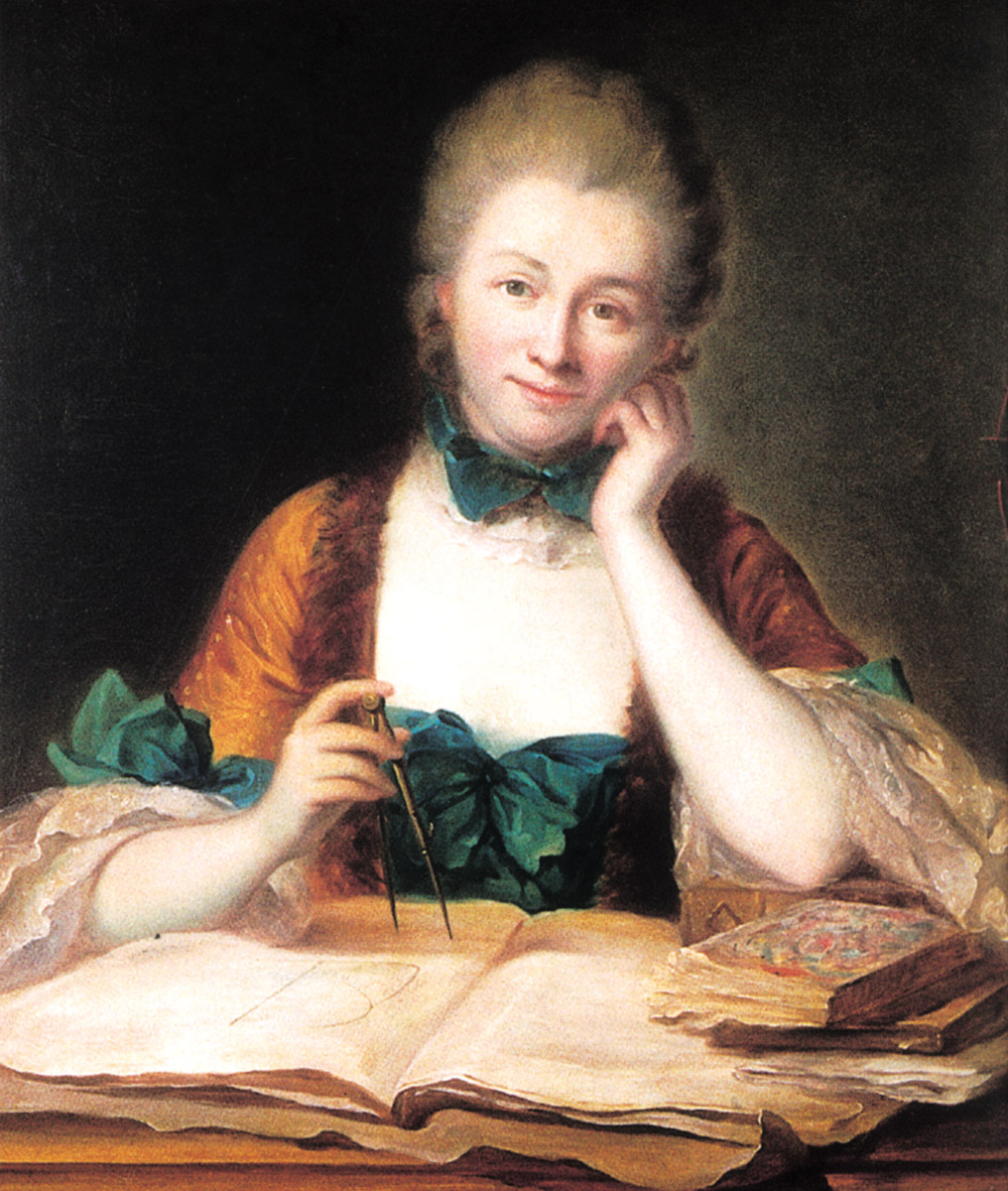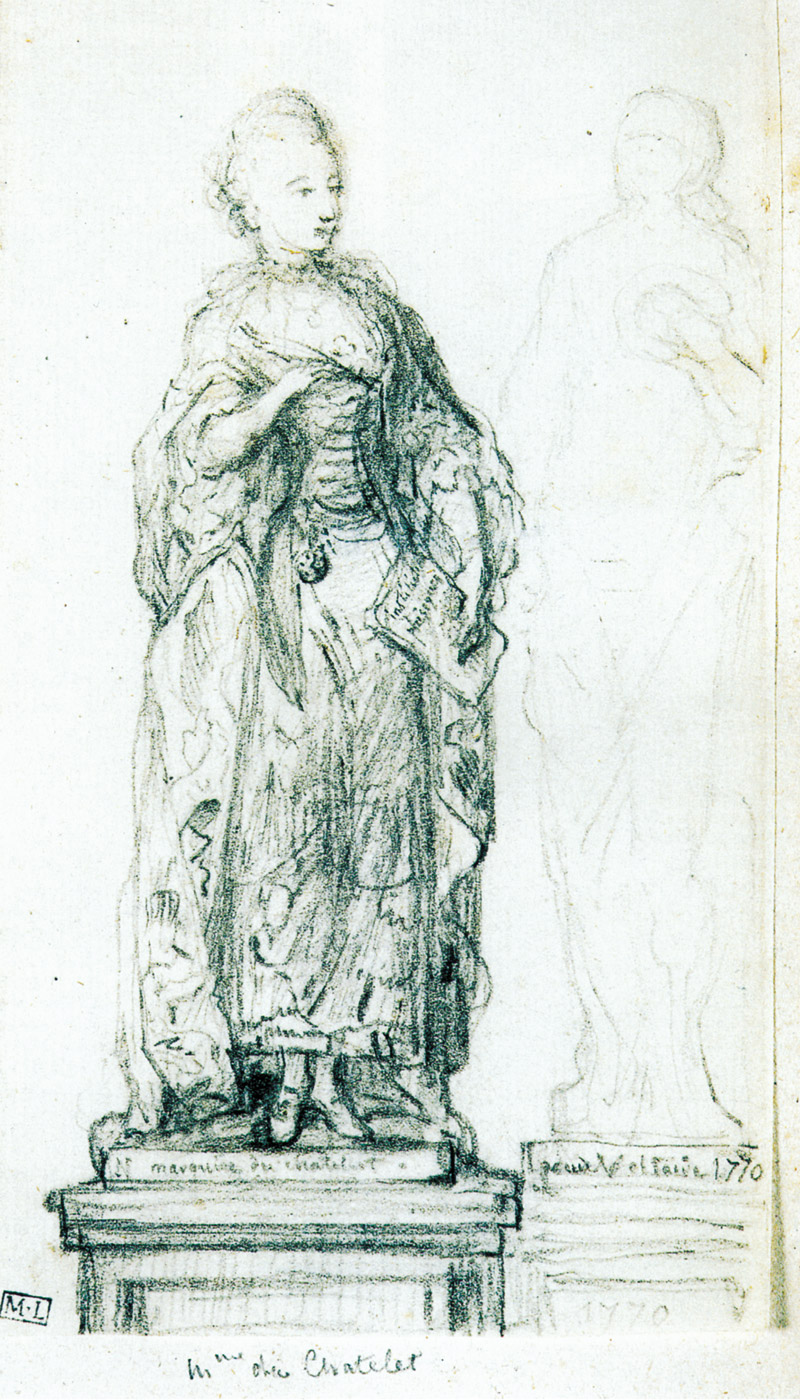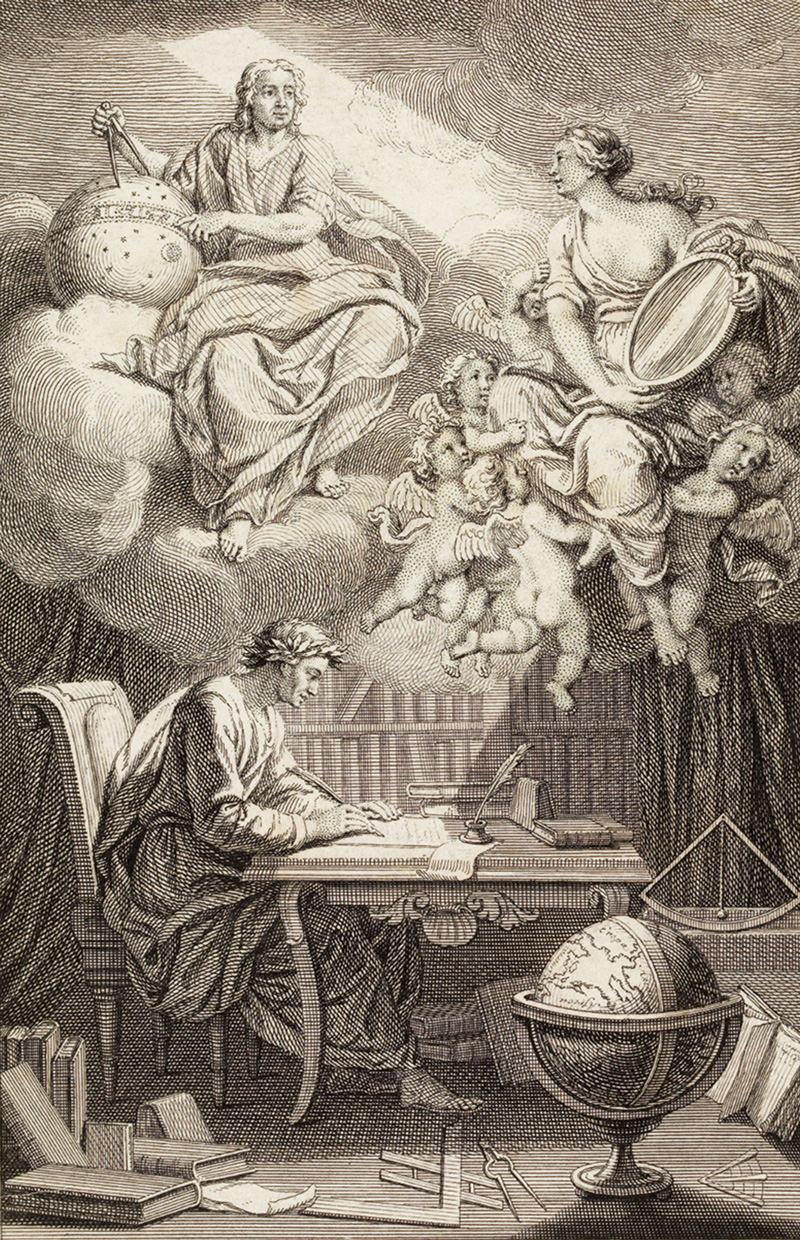Object Lesson / Objet de Lux
The passions of Madame Du Châtelet
Celeste Olalquiaga
“Object Lesson,” a column by Celeste Olalquiaga, reads culture against the grain to identify the striking illustrations of a historical process of principle.
Glory of her sex and of the century we live in, the goal of her work is to enlighten men.
—Voltaire
Acclaimed in the Décade d’Augsbourg, a German “Who’s Who” produced between 1741 and 1755, as one of the outstanding erudites of her time, Gabrielle Émilie Le Tonnelier de Breteuil, Marquise Du Châtelet (1706–1749), considered one of the first women scientists, was relegated after her death to the Enlightenment’s shadows, from which she has emerged only recently. Brilliant and passionate, as fun-loving as she was hard-working, “la divine Émilie” was both admired and loathed by her peers, stunned as they were by the nerve of an eighteenth-century female who was as capable of debating men on the laws of physics as she was of performing the role typically assigned to her gender. She left in her wake a series of lovers in the best tradition of intrigue among French royals—or rather among intellectuals, long before the Existentialists and the French avant-garde.

Born to what is known as the “noblesse de robe” (the haute bourgeoisie who held high public office), Émilie was surrounded by men who not only admired her talents but enabled her to develop them. Starting with her father, who gave her the same education as her two brothers (with the exception of mathematics and metaphysics, for which only the girl demonstrated special aptitude), continuing with her husband, a military man who allowed Madame Du Châtelet to pursue her studies (and parties) once she had given him children, and culminating with her lifelong companion, the philosopher Voltaire (1694–1778), who wrote public tributes to her genius, la Marquise knew the rare privilege of intellectual entitlement at a time when this territory was definitely off-limits to women, no matter their social rank.
And benefit from this privilege she did. She was the first woman to be published by the Académie Royale des Sciences with her 1739 Dissertation sur la nature du feu, and dedicated a good part of her life to producing the only French translation of Sir Isaac Newton’s Principia Mathematica (1687) accompanied by her commentary (Principes mathématiques de la philosophie naturelle), published posthumously in 1759, a text used well into the twentieth century. Her Institutions de physique (1740) explained the doctrines of Descartes (1596–1650), Leibniz, Newton so clearly that she was named member of the Academy of Sciences in Bologna (1746). She even dared change her mind (understood by some to be a woman’s prerogative) in the crucial debate over the laws governing the conservation of vis viva (Latin for “living force”), switching allegiance from Newton to the German philosopher Gottfried Leibniz (1646–1716).
Despite her profound dedication to the work of both Descartes and Newton, Breteuil Duchastellet, as she occasionally signed her name, believed that the Newtonian equation, whereby the vis viva of a moving object is calculated to be its mass multiplied by its velocity, was fundamentally wrong. Aligning herself with Leibniz’s proposal of vis viva as the multiplication of mass by the square of velocity, she almost heretically opposed French scientists as well as Newton in her early apprehension of the principles that would eventually lead to Einstein’s theory of relativity.
Having initially espoused the Newtonian position in a footnote to her important manuscript written in 1737 on the nature of fire, by the time this text was going to press two years later she requested that the Academy strike out the note or include an erratum at the end. Since neither request was honored, “milady Newton,” as an antagonist called her, proceeded to argue her position in the Institutions de physique of 1740, where she explains and critiques Newton’s complex principles for her son. The book, published anonymously, was at the root of not one but two debates, since her tutor, the German mathematician Samuel Koenig (1712–1757), claimed it as his own.

While this claim was quickly refuted, the debate around vis viva gained momentum, becoming the first public scientific debate between a man and a woman. The man was the Permanent Secretary of the Académie Royale des Sciences, Jean-Jacques Dortous de Mairan, whom Madame Du Châtelet had praised in the infamous Newton footnote only to later criticize in her Institutions de physique. His response and her counter-response, as well as the intellectual alignments that they triggered, are illustrative of the fiction and realities of gender disparity. Mairan’s “Lettre à Madame **** sur la question des forces vives” (1741) starts with a long, incredulous wail at her shift from admiration to criticism. Claiming that she could not possibly have read closely enough his Dissertation sur l’estimation et la mesure des forces motrices du corps (1728), Mairan reiterates the thesis of the book, which he has expressly reprinted and sent to her.
Basing his attack on the presumption of Madame Du Châtelet’s misunderstanding, or rather lack of understanding, of the principles expounded in his tome, Mairan’s attack is couched in layers of formality and ironic politeness: “I flatter myself, Madame, that you will take all these thoughts as proof of the esteem in which I hold your illuminated thoughts and your good understanding, which would not allow you to resist truth when it is presented to you unclouded.”
Châtelet’s response was as prompt as it was sharp and definitive. She not only mimicked his false politeness, but raised the stakes with a scalding sarcasm that left no part of his letter untouched: “I have read and reread your thesis, and cannot find anything different from what I’ve expounded. Maybe we should define clearly what reading means.” Literally positioning his writing and her paraphrasing side by side, she counters his accusations of misquotation, arguing her position with such clarity, force, and wit that his is rendered ridiculous.
Mairan further insulted Madame Du Châtelet by implying that she had been influenced by a third person, an accusation that still found echoes in the early twentieth century when she was described as little more than “Voltaire’s friend,” a horseback-riding beauty intruding on men’s intellectual havens for inspiration. Her debate with Mairan forced everyone to choose sides, the most ironic allegiance turning out to be Voltaire’s support of Mairan, to whom he wrote: “I don’t know what fatality makes ladies prefer Leibniz. You are like Hercules fighting bravely against the Amazons; and I am but a harmless volunteer in your army.”
Voltaire should talk: it was in order to help him that Madame Du Châtelet took up again her studies of metaphysics after having abandoned them for many years, collaborating on and writing the introduction to his Elémens de la philosophie de Neuton of 1738. “She dictated and I wrote,” Volatire supposedly told a friend. Considered a more capable scientist than Voltaire, who was more of a philosopher, “Madame Pompon Newton,” as he jokingly called her in reference to her excessive love of clothes, earned his unending respect and admiration, as his many paeans to “la divine Émilie, Minerve de France,” attest.

The couple spent the first ten years of their intense relationship working in isolation in her husband’s chateau in Champagne, among unusual luxuries such as the bathtub Voltaire installed for Émilie’s daily baths. A tenacious and disciplined scholar, she would sleep only two hours a day and leave another two for spartan meals and some conversation, dedicating the rest of her time to studies and experiments. The “philosophes voluptueux” also staged theatrical pieces for amusement, often dragging their infrequent visitors, including Émilie’s husband, to endless theatrical marathons. This intense period strengthened the bonds between them to such a point that even when their sexual interests shifted, both of them moving on to new partners, they still lived together to the end.
Passionate to a fault, Madame Du Châtelet’s love life started with drama and ended with tragedy, her relationship with Voltaire happily marking the time in between. As a young woman, she attempted to commit suicide when scorned by her first lover; in her forties, and in the midst of the translation that would grant her a lasting place among the scientists of the Enlightenment, she became pregnant by a young officer. Intuiting that her days were numbered, she hastened to finish her manuscript, working around the clock and dying the very night she sent it off to the Bibliothèque Nationale, only six days after giving birth.
Authoritative and demanding, Madame Du Châtelet made many enemies among both men and women, although she also maintained several lifelong friends and correspondents, most of whom were outstanding in their fields. Besides her scientific publications, she wrote about religion and distinguished herself as a linguist and a musician. She managed to combine worldly frivolities with intellectual abstraction, a combination which she articulately advocates in her Discours sur le bonheur (written in 1746 and published in 1779), where she defends her love of sex and gambling in the same breath as learning and studying, the latter being the only areas, she argues, where women could find independence and relief from the restrictions imposed upon them: “Of all the passions, the love of learning contributes the most to our happiness. [Therein is] a passion from which an elevated soul is never entirely exempt, that of glory; learning is the only way to acquire glory for half of humanity, yet it is precisely this half which is deprived of the means of education, rendering impossible such a taste of glory.”
As for love, Madame Du Châtelet, a committed defender of illusion, without which she claims there is no possible joy, is extremely pragmatic: “Let us … never allow our heart to keep the slightest flicker for someone whose interest diminishes and who has stopped loving us. You need to abandon your love some day, even if you haven’t aged, and that day must be when such love has stopped making you happy.” Voltaire, her husband, and her lover were all at Madame Du Châtelet’s deathbed.
Celeste Olalquiaga is the author of Megalopolis: Contemporary Cultural Sensibilities (University of Minnesota Press, 1992) and The Artificial Kingdom: A Treasury of the Kitsch Experience (Pantheon, 1998). She is currently writing a book on petrification. For more information and to contact Olalquiaga, visit “Celeste’s World” at www.celesteolalquiaga.com
Spotted an error? Email us at corrections at cabinetmagazine dot org.
If you’ve enjoyed the free articles that we offer on our site, please consider subscribing to our nonprofit magazine. You get twelve online issues and unlimited access to all our archives.